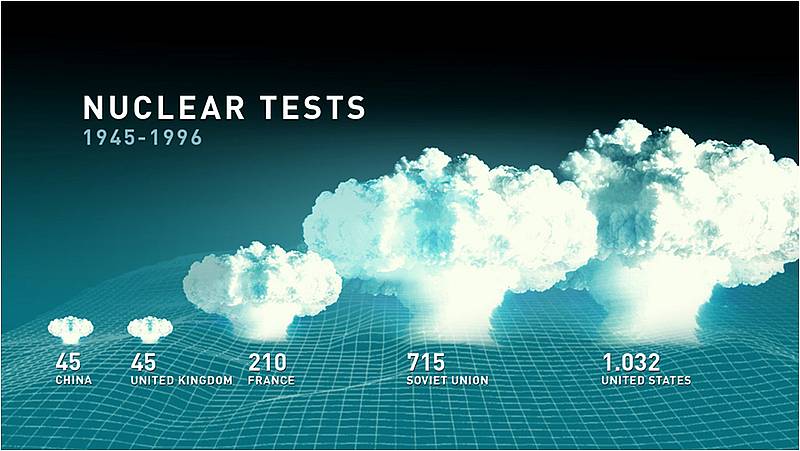
Time to Ratify the Nuclear Test Ban Treaty
By Stephen A. Cheney USMC (Ret.)
During the course of the Cold War, the United States and Soviet Union developed the nuclear capacity to destroy each other several times over. Before the Berlin Wall fell these countries possessed more than 65,000 nuclear weapons combined. Some strategists even promoted a war fighting strategy where both powers would launch nuclear weapons as if they were artillery in first, second, or limited strikes.
Today, the post-Cold War, post-9/11 threat requires us to rethink our nuclear strategy and stockpiles, and review what is required for modern deterrence. These threats means we need strategies to fight nuclear terrorism rather than actual large-scale nuclear war.
Our greatest threat is not that of a nuclear attack from an enemy country, but homemade “dirty” bombs, powered by conventional explosives but designed to contaminate a wide area with radioactive material. Money spent on military advanced technology and training aimed at combating low technology threats such as “dirty” bombs, have proven more effective in protecting the lives of our troops and that of our allies than any of our large nuclear assets.
There is still a role for a small United States nuclear force while other nations maintain their own strategic nuclear forces. It would be unsafe and imprudent to retire or drastically reduce our nuclear forces while others maintain a larger force. Thus, the United States should continue to maintain a safe and reliable nuclear deterrent. Our triad of missiles, bombers, and submarines is still effective at providing deterrence to our enemies; though we no longer need a Cold War sized force nor require actual nuclear testing.
After conducting more than 1,000 nuclear test explosions, the United States maintains a nuclear test moratorium—a policy of no nuclear weapons testing. We have not explosively tested a nuclear weapon in nearly 20 years, instead we maintain a robust stockpile stewardship program to ensure the reliability of our nuclear arsenal. A recent National Academy of Sciences study found that our nuclear stewardship program is working better than ever and we know more about the health of our nuclear stockpile than ever before.
In order for the United States to gain greater advantage for our no testing policy we should ratify the Comprehensive Test Ban Treaty (CTBT). This would institute a worldwide ban on nuclear tests and the use of networks to apply pressure against states like Iran and North Korea.
These networks of pressure are exactly what we need against rogue states that aren’t deterred from our triad of thousands of strategic nuclear weapons. But we can only use them if the United States were to ratify the CTBT. By ratifying the CTBT, at no consequence to our own nuclear capabilities, the United States further establishes an international norm and technological processes that pressures Iran and North Korea to ratify the treaty as well. We no longer need to test, but these states do in order to bridge their knowledge gaps.
Therefore, part of our post cold war nuclear strategy should include the Comprehensive Test Ban Treaty (CTBT). By ratifying the CTBT the United States would gain yet another tool to shrink Iran and North Korea’s nuclear programs and prevent future nuclear weapons programs. By preventing nuclear testing the CTBT limits countries abilities to advance their nuclear weapons program.
Technological advances and new science has made it possible to pinpoint and accurately determine the size and scope of a nuclear explosion. The international community and the United States were able to show the accuracy of this technology when it determined the size and scope of North Korea’s 2006 and 2009 nuclear tests. The CTBT’s network of sensors can detect even the smallest of nuclear tests and is a vital tool that the United States can use against rogue states that aren’t deterred by our triad of strategic nuclear weapons.
Over a decade ago the Senate rejected the CTBT in a rush, never having the time to consider the complicated science and verification elements that is the basis for understanding the treaty. We know more than ever about maintaining a safe, secure and reliable deterrent and our ability to verify the Treaty has been well established. Now is the time has come for the Senate to learn how much progress has been made and to ratify a treaty that will only increase the security of the United States while pressuring our adversaries.
See more on ASP’s nuclear security work here






[…] Cheney: Time to Ratify the Nuclear Test Ban Treaty […]